 When you actually talk to John Bunt, it’s me-groups-legal-pitfalls-with-postingshard to imagine him getting so angry about a Usenet group flame session, as to take the other parties to court. But he did. He also took their ISPs to court for carrying their libels.
When you actually talk to John Bunt, it’s me-groups-legal-pitfalls-with-postingshard to imagine him getting so angry about a Usenet group flame session, as to take the other parties to court. But he did. He also took their ISPs to court for carrying their libels.
The case isn’t settled, yet, but the case against the ISPs was thrown out, on the grounds that ISPs are not “publishers” – a complicated shift in the way the digital age views these things. Time was, when WH Smith refused to carry copies of Private Eye because to carry a publication containing a libel is to be guilty of that libel.
 That dates back to a Noble Lord of the 19th century, who won a libel action against a book, causing the publisher to be convicted. Some years later, he found a second hand copy of that book in a second hand book shop, and sued them – and won. This meant that people sued WH Smiths – not because they disliked the bookseller, but because Private Eye was poor, and WH Smith had plenty of money.
That dates back to a Noble Lord of the 19th century, who won a libel action against a book, causing the publisher to be convicted. Some years later, he found a second hand copy of that book in a second hand book shop, and sued them – and won. This meant that people sued WH Smiths – not because they disliked the bookseller, but because Private Eye was poor, and WH Smith had plenty of money.
Bunt’s case means that we now know the law, in the UK, on ISPs and libel. It doesn’t mean that the law is simple, or easy to understand! The case of Godfrey vs Demon back in 2000 means that if you are an ISP who knows about a libellous posting, and someone can prove you knew about it, then you have a choice: take it down, and escape legal penalty – or leave it there, and become a publisher.
![]() I spent some time chatting to Bunt after the case, and he says that he’s not a vindictive man – which isn’t much surprise, perhaps. But what’s interesting, is that he says he doesn’t think the people he’s suing are, either.
I spent some time chatting to Bunt after the case, and he says that he’s not a vindictive man – which isn’t much surprise, perhaps. But what’s interesting, is that he says he doesn’t think the people he’s suing are, either.
“When this latest thing started, my friends and I assumed that it was a bunch of kids, winding us up, and getting out of hand,” he said. It seems they aren’t; they are adult, savvy people who seem, somehow, to have spurred each other on to greater and greater excesses. It seems that at least one of them actually became so heated, he refused to accept a legal injunction to stop repeating the alleged libels, and began attacking the Judge who granted the injunction.
 This sort of case seems to be on the increase. “Anyone with web access and a quick temper can find themselves facing a lawsuit,” commented Shannon Proudfoot of Ottawa newspaper, Star Phoenix. Apparently, people who are new to the art of publishing – bloggers, to some extent, but newsgroup flamers, more often – don’t realise that there are legal limits to what you can say about someone else in public.
This sort of case seems to be on the increase. “Anyone with web access and a quick temper can find themselves facing a lawsuit,” commented Shannon Proudfoot of Ottawa newspaper, Star Phoenix. Apparently, people who are new to the art of publishing – bloggers, to some extent, but newsgroup flamers, more often – don’t realise that there are legal limits to what you can say about someone else in public.
The problem is that on the Internet, you can flame someone anonymously. What Bunt has shown is that it’s pretty hard to do that if a lawsuit is involved; in those circumstances, your ISP will lift the veil.
 “Today’s state of the art in spam control solutions is far ahead of where it was, say, two years ago. Improved spam filters being available to more people — plus laws that allow the citizenry to penalise spammers — will cause the scourge of email spam to wither and die.”
“Today’s state of the art in spam control solutions is far ahead of where it was, say, two years ago. Improved spam filters being available to more people — plus laws that allow the citizenry to penalise spammers — will cause the scourge of email spam to wither and die.” The Goodmail idea is simple enough; you create a world in which only mail from known sources gets through. You and I, as mail users, tell our email system that if we don’t have someone’s name in the address book, then it’s spam. And our email system then says: “I’ve been given money to let this person through” and we say: “Well, I trust my email system.”
The Goodmail idea is simple enough; you create a world in which only mail from known sources gets through. You and I, as mail users, tell our email system that if we don’t have someone’s name in the address book, then it’s spam. And our email system then says: “I’ve been given money to let this person through” and we say: “Well, I trust my email system.”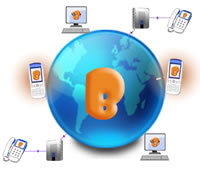 A new service, Barablu, launches today claiming to offer free voice calls and text messages between mobile phones.
A new service, Barablu, launches today claiming to offer free voice calls and text messages between mobile phones.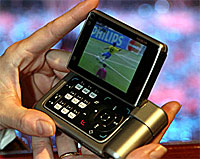 It’s as clear as the screen on your PSP that mobile phone operators aren’t very keen on ideas like this. Many commentators have claimed that the operators have gone a long way to trying to block the development and sale of WiFi-capable mobile phones – as the operators are terrified that it will erode the price of calls from ‘quite a lot’ per minute, to zero.
It’s as clear as the screen on your PSP that mobile phone operators aren’t very keen on ideas like this. Many commentators have claimed that the operators have gone a long way to trying to block the development and sale of WiFi-capable mobile phones – as the operators are terrified that it will erode the price of calls from ‘quite a lot’ per minute, to zero. Barablu does appear to have something unique here – at least currently. The difficulty they’re going to hit is the same for anyone trying to build a community of users and provide this type of service -it’s all about the number of people you can attract on to it. If people find their friends aren’t on it, or their said friends already have a similar service – the software will get unloaded and they’ll stop using it.
Barablu does appear to have something unique here – at least currently. The difficulty they’re going to hit is the same for anyone trying to build a community of users and provide this type of service -it’s all about the number of people you can attract on to it. If people find their friends aren’t on it, or their said friends already have a similar service – the software will get unloaded and they’ll stop using it. Things are hotting up in the US VoIP market as Yahoo announces their low cost Messenger with Voice service, letting users make phone calls through the company’s instant messaging software.
Things are hotting up in the US VoIP market as Yahoo announces their low cost Messenger with Voice service, letting users make phone calls through the company’s instant messaging software. The Phone In service – which lets customers to receive calls on their computers from regular and mobile phones – is priced at $2.99 a month, or $29.90 (~£17, ~€25) a year, compared to Skype’s €30 yearly charge.
The Phone In service – which lets customers to receive calls on their computers from regular and mobile phones – is priced at $2.99 a month, or $29.90 (~£17, ~€25) a year, compared to Skype’s €30 yearly charge.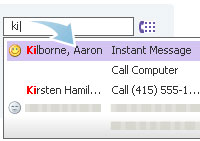 Yahoo are upbeat about prospects for their new service after trials in the initial five countries proved more successful than anticipated, especially in France.
Yahoo are upbeat about prospects for their new service after trials in the initial five countries proved more successful than anticipated, especially in France. Back in our day, the only round thing that kids had in their pockets were marbles, conkers and gobstoppers, but German MP3 player maker Maxfield wants kids to shell out for their Max-Joy digital music player.
Back in our day, the only round thing that kids had in their pockets were marbles, conkers and gobstoppers, but German MP3 player maker Maxfield wants kids to shell out for their Max-Joy digital music player.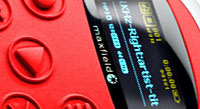 There’s 256MB of on-board storage, with the option to add more song space via a SD memory card slot.
There’s 256MB of on-board storage, with the option to add more song space via a SD memory card slot. The Max-Joy runs off a single AAA battery, which the makers claim will give up to 19 hours’ playback time, offering plenty of potential for parents to get a bit of peace.
The Max-Joy runs off a single AAA battery, which the makers claim will give up to 19 hours’ playback time, offering plenty of potential for parents to get a bit of peace.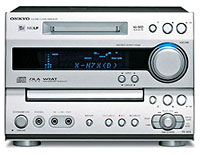 It has to be said that our last experience with an Onkyo hi-fi product wasn’t exactly favourable (see our
It has to be said that our last experience with an Onkyo hi-fi product wasn’t exactly favourable (see our  Attractively clad in a silver finish with a large LCD panel, the X-N7UWX also comes with a USB dongle and separate Wi-Fi unit, letting you wirelessly connect the stereo up to your PC and listen to MP3s on your hard drive – or stream content from your desktop.
Attractively clad in a silver finish with a large LCD panel, the X-N7UWX also comes with a USB dongle and separate Wi-Fi unit, letting you wirelessly connect the stereo up to your PC and listen to MP3s on your hard drive – or stream content from your desktop. There’s also an AM/FM receiver in there too, and possibly a DAB radio.
There’s also an AM/FM receiver in there too, and possibly a DAB radio.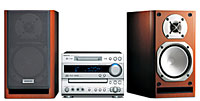 No pricing or availability yet for either of the units, but even if this unit doesn’t make it to our shores, you can guarantee that we’ll be seeing a lot more Wi-Fi hi-fi units on the horizon.
No pricing or availability yet for either of the units, but even if this unit doesn’t make it to our shores, you can guarantee that we’ll be seeing a lot more Wi-Fi hi-fi units on the horizon. Like Dr Strangelove with a modem, Google has made another stride in its plans to take over the virtual world, with a new Google Finance service announced today.
Like Dr Strangelove with a modem, Google has made another stride in its plans to take over the virtual world, with a new Google Finance service announced today. There’ll also be a broad range of company news and information, an interactive chart correlating news and other events with stock price spikes and falls, delivered in a “clean, uncluttered user interface.”
There’ll also be a broad range of company news and information, an interactive chart correlating news and other events with stock price spikes and falls, delivered in a “clean, uncluttered user interface.” Google Finance also provides a personalised area for keeping track of stock quotes for selected companies along with any related news.
Google Finance also provides a personalised area for keeping track of stock quotes for selected companies along with any related news. All-weather, lantern-jaw outdoor types and motorbike fiends should warm to the “ruggedized” version of the Pocket Loox N520 which has just been announced by the German based Andres-Industries.
All-weather, lantern-jaw outdoor types and motorbike fiends should warm to the “ruggedized” version of the Pocket Loox N520 which has just been announced by the German based Andres-Industries.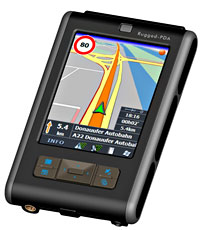 Motored by an Intel XScale PXA270 312 MHz CPU, the LOOX offers integrated wireless LAN 802.11g Wi-Fi, SD/MMC slot (with support for SDIO) and a large, 240×320 pixels 3.5″ screen supported by 64Mb RAM and 128Mb flash memory
Motored by an Intel XScale PXA270 312 MHz CPU, the LOOX offers integrated wireless LAN 802.11g Wi-Fi, SD/MMC slot (with support for SDIO) and a large, 240×320 pixels 3.5″ screen supported by 64Mb RAM and 128Mb flash memory “Now that Macs have PC chips in them, they can run PC software.” Obvious, isn’t it. Except that someone recently managed to make the new Intel-based Mac run PC software, and it’s a big, big surprise, and it’s something many said would never happen.
“Now that Macs have PC chips in them, they can run PC software.” Obvious, isn’t it. Except that someone recently managed to make the new Intel-based Mac run PC software, and it’s a big, big surprise, and it’s something many said would never happen. French outfit Archos has launched what they claim is the first portable digital TV receiver/ recorder combining portable video recorder (PVR) functionality and two DTT (Digtial Terrestrail Television) tuners.
French outfit Archos has launched what they claim is the first portable digital TV receiver/ recorder combining portable video recorder (PVR) functionality and two DTT (Digtial Terrestrail Television) tuners. The built-in DVR records digital TV directly to the hard disk in MPEG2 TS format, and there’s an onboard Electronic Programme Guide (EPG) for scheduled recordings (so long as you can get reception, natch).
The built-in DVR records digital TV directly to the hard disk in MPEG2 TS format, and there’s an onboard Electronic Programme Guide (EPG) for scheduled recordings (so long as you can get reception, natch). An optional 100GB version offers even more storage, which equates to, err, lots more videos, songs and stuff.
An optional 100GB version offers even more storage, which equates to, err, lots more videos, songs and stuff. We reckon that someone whipping out a large, expensive multimedia device on a London train would soon have no trouble imagining filling in an insurance claim, but with no UK launch announced, perhaps the muggers will have to wait for now.
We reckon that someone whipping out a large, expensive multimedia device on a London train would soon have no trouble imagining filling in an insurance claim, but with no UK launch announced, perhaps the muggers will have to wait for now.